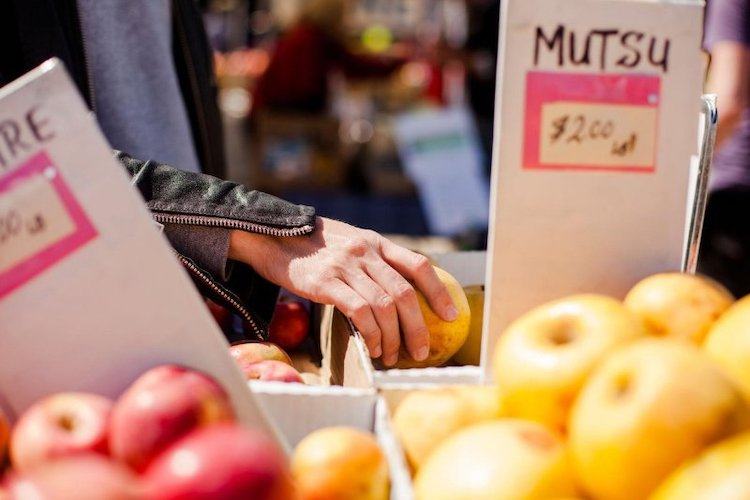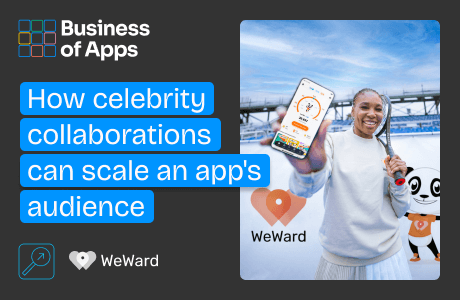
This article was first published on Taboola blog.
Imagine that you’re selling apples out of a cart. A vendor of Red Delicious apples wants a prime spot in your cart. You must figure out how to charge him or her for this spot. Which of these monetization strategies makes the most sense:
- You get paid every time 1,000 people walk by your cart and see your apples.
- You get paid every time someone stops and picks up one of your apples.
For publishers that monetized their content with advertisements, the first strategy was the norm. They got used to charging by CPM (cost-per-thousand). Advertisers were paying a finite amount for every 1,000 people who saw their ad, and often when people didn’t.
As apps began to monetize their content in a similar fashion, they followed suit, relying on the CPM model made the standard a century ago starting in print and radio, then TV and more recently, online, first introduced in 1995 by Netscape.
In my experience, this is no longer the most effective and lucrative strategy for app owners, especially for those that have truly engaged users. Enter: CTR (click-through rate). In this model, advertisers are charged per click and publishers are effectively selling on CTR.
Here’s why selling in-app advertising on CTR is better than on CPM…but there’s a catch, and I’ll share the secret to success.
CPM puts a cap on revenue.
Selling ads according to CPM puts a ceiling on revenue. If you want to increase your revenue, you have to spend money on increasing your reach to create more ad opportunities, or pumping out more ads to the same users before seeing a return.
But if you sell on CTR, revenue is not capped. You can increase engagement on the same number of impressions per person, or DAU (daily active user). Whereas with CPM, you stretch to reach more and more people, or degrade your user experience with more ads per user.
Better yet, create new “moments of next” within your app that elicit genuine engagement for your users and more ad opportunities for you and your ad partners.
This setup is better for advertisers, too. After all, clicks are more valuable than impressions. They signify a user’s interest in an ad and a willingness to take action in response. When you prioritize clicks, you prove their in-app advertising drives engagement, not just passing glances—think walking by the apple cart vs. picking up the apple.
CPMs are falling due to bid shading.
As online advertising continues to evolve, so are the tools that allow advertisers to bid— demand-side platforms (DSPs). They’re investing in algorithms and technology to take both an aggregated view of the market and their advertiser’s past campaign performance to set their bids.
CTV Growth Guide: A must-read for performance marketers
Whether you’re looking to boost brand awareness or drive user acquisition, this guide has you covered. Learn how to leverage CTV for both brand awareness and performance-driven campaigns and get actionable insights to optimize your strategies.
Download nowThe practice is called bid shading, but the goal is simple—continue to acquire audiences, at scale for the lowest cost.
The outcome, as with many “innovations” in ad tech, is that the supply partner suffers. First the administrative costs and lost value within the supply chain (e.g. each of the many middle-men like trading desks, SSPs, Data Providers, SSPs, etc. taking their cut), affectionately known as the “ad tax,” which The Guardian surmised as nearly 70% of the total value—and now this. I think it’s safe to assume that rates will steadily decline over time as their inventory becomes further commoditized by market dynamics. In fact, AdExchanger reports that bid shading is reducing ad costs by 20%.
By selling ads based on CTR, you avoid further risk, which there may be more of as DSPs build smarter algorithms for finding lower bids.
“The real value of each impression is not being valued according to the real supply and demand out there,” Rotem Shaul wrote for AdExchanger.
“SSPs [supply side publishing] and publishers build teams and technologies trying to predict the best floors to use, attempting to find the sweet spot to simultaneously optimize fill rates and CPMs.”
By selling to advertisers according to CTR, publishers build a truly sustainable revenue model, uncapped by traditional and often out-dated metrics
The Rise of alternative one-click sign ins.
With the pending release of “Sign in with Apple” in iOS 13, and Firefox’s Enhanced Tracking Protection enabled by default, it’s important for apps to consider, or perhaps reconsider, who has access to their user data.
Facebook and Google are not incentivized to take steps such as Apple or Firefox, but if you’re reliant on revenue from either one or both it’s a logical question to ask yourself about the long-term viability of this revenue stream(s).
As users continue to educate themselves on privacy or consider implementing “Sign in with Apple,” it’s a safe bet that this will have a negative impact on revenue, especially coming from Facebook and Google in the form of lower fill rates and lower CPMs for what little inventory their willing to buy post sign-in with Apple.
CTR > CPM
Alas, App owners are in a tough spot. The programmatic and privacy landscape is changing around them and the revenue they are counting on hangs in the balance.
As DSPs continue to merge, algorithms enable bid shading, the implications of first-price auctions and advertisers get smarter about their buys, you’re going to have to adapt if you want to maintain and grow revenue.
That’s why it’s crucial to understand the importance of CTR-based ad spots. Where CPM was once the status quo, CTR is now a lifesaver for publishers looking to monetize their content more effectively and keep readers engaged. CTR-based ad revenue is uncapped, immune to bid shading, and a better indication of reader engagement.
We at Taboola help app owners significantly increase their CTR and boost their revenue by placing in-app advertising in the most engaging spot — when users have finished an in-app action, and are at the ‘moment of next,’ ready to consume something new.
We’d be amiss if we didn’t at least mention CPC (cost-per-click), or what an advertiser is willing to pay each time someone picks up their apple. Safe to say, with 90% reach in the US and 45% globally (1.5B people everything month), Taboola has the most demand (millions of pieces of unique content) and therefore the highest CPCs in the industry.
We partner with our app developers to not only better monetize the inventory they currently have, but create new pockets of engagement within the user journey, like we’re doing with ridesharing app Via.
And, we’re not talking about clickbait or fat fingers. Real engagement drives CTR. Taboola closely analyzes post-click conversions to track high-quality leads. Advertisers only spend with Taboola if they see a return on their investment, which we also help them measure, and they pay a premium for that in the form of higher CPCs.
All of these precautions eliminate incentivized clicks. Think about that apple cart analogy. People shouldn’t walk up to your cart, pick up an apple, and realize it’s a painted piece of plastic and won’t actually keep the doctor away. They should pick up a real apple that entices them to buy and take a bite.











